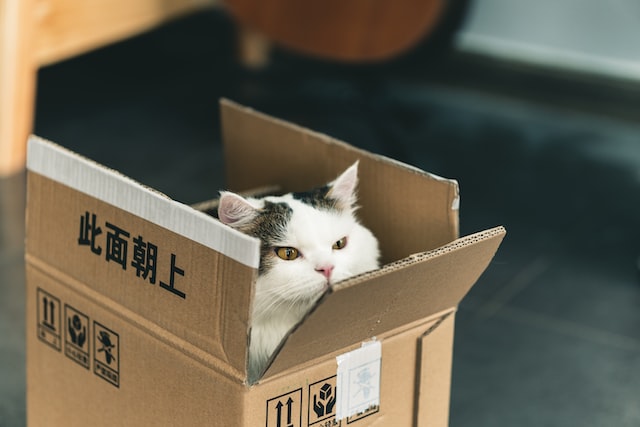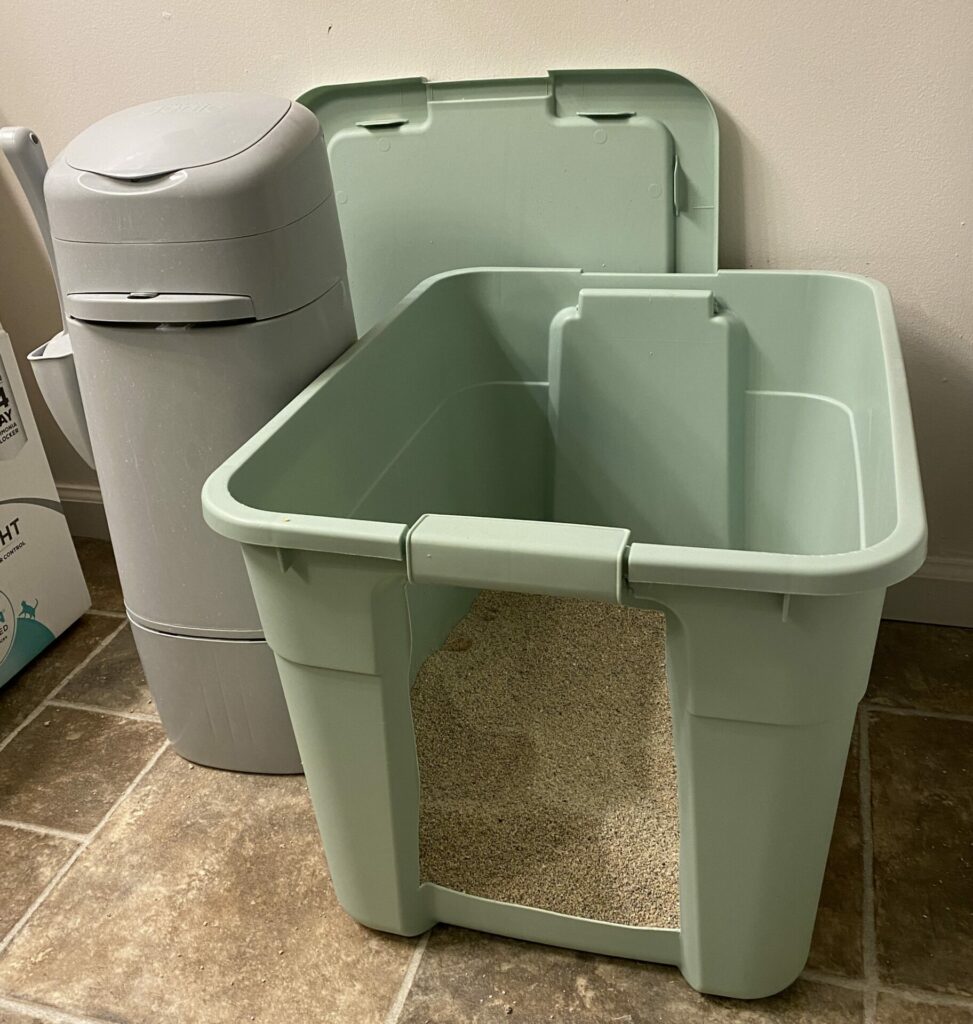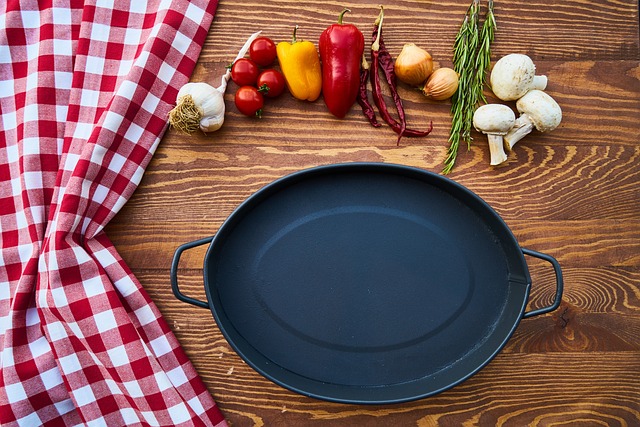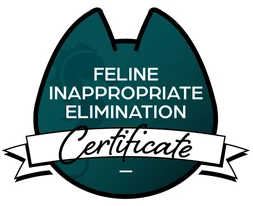If you haven’t had a litter box problem with your cat, consider yourself lucky. Many people get away with just setting up a box and hoping their cat uses it (no litter box training required!). For others… they need me.
While there are many things that can drive a cat to not want to use their litter box including the location, the type of litter, or a medical problem, one of the biggest problems I see with clients is the box itself. In many cases, they haven’t found a box that meets their cats’ preferences while balancing the human needs of keeping a clean home.
What do we do in these cases? Get crafty! Your cat won’t know if the litter box you provide them wasn’t marketed as a litter box so you can easily make a DIY litter box. The best choice of litter box may be one you make yourself. For some boxes, it’s as easy as just filling the box with litter. Others require a bit of work on your part. Regardless, there are many great options for your cat to get a custom litter box that they’ll happily use.

Storage Tub Litter Box
This is one of my favorite types of DIY litter boxes as you can get a nice, big box that’s easy to clean and has high walls. Many clients feel like their only option to get their cat to not fling litter everywhere is to use a covered box. If their cat isn’t thrilled about covered boxes, this creates trouble. Turning a storage tote into a box is a great alternative as it helps keep the litter contained and can be left uncovered. It also can be used as an outer shell for another type of box to prevent your cat from urinating over the edge or flinging litter everywhere.
These boxes are so good, they’re the kind of litter box I use!

Supplies
For this box, you will need:
- A large plastic storage tote (bigger is better and one with a flat bottom and straight walls is best)
- A permanent marker
- A sharp blade
- Sandpaper
- Optional: Duct tape
How To Make The Litter Box
To start, get your storage tub and draw an outline of where you are going to cut the entrance for your cat in it. A good entrance is wider than your cat and allows for a low entrance. Especially if you have a long-haired cat or senior cat, you don’t want them to have to rub against the edges of the entryway or have to take too large of a step to get into the box. 2-3 inches from the ground is a good height for the entrance to the box.
Once you’re satisfied, you can go ahead and cut using a heavy duty utility knife. Don’t go for a wimpy box cutter for this part! It should be sharp and easily able to cut through the plastic. It’s an extremely good idea to wear knife protection gloves and safety goggles so you don’t injure yourself should your grip slip or a blade go flying. Make sure curious cats are elsewhere behind a closed door for this part.
Cut the entry out and make sure you’re satisfied with the results. If you aren’t, you can always cut it a little bigger. Once things look good, take your sandpaper and sand down the edges of the entry way. This part is extremely important as you want to make sure the entry isn’t sharp or it may injure your cat. I suggest carefully feeling the edges of the entry yourself to see how it feels. You can also use duct tape to cover the edges as an extra layer of protection. You still want to sand the edges to make sure it’s not too sharp so nothing pokes through the duct tape.
That’s it! Not too hard, right? You can even use the lid of the storage bin as a tray to catch wandering litter as your cat exits the box.
A variation you could try would be cutting a circle in the box to keep the wall intact. Make sure the circle is wide enough that your cat can easily get in and out without having to squeeze and that the entrance is low enough for easy access. Same as before, make sure you sand the entire edge of the circle entrance and cover any rough parts with duct tape.
Bam! You’re all done with the first DIY litter box. Where would the fun be if we stopped there, though? Let’s go over a few other options.
Low Sided DIY Litter Boxes
Many cats, especially senior cats, cats with arthritis, or long-haired cats, may prefer a low-sided box as they are easier to get in and out of the box. They also allow the cat to get in and out without rubbing against the box. There are many options out there that are targeted toward senior cats, but they may not actually be a great option as the walls are still too high. If your cat has mobility issues or arthritis, you’ll want to choose the easiest box to get in and out of for your cat.
Trays Galore
Thankfully, there are a few solutions that require minimal effort on your part so they’re really easy to set up! You can even combine the storage tub box above with one of these options to contain any flying litter by cutting the entry to the box straight down to the ground. The lower-sided boxes will keep the litter mostly contained so it will be less likely to spill out the side. If you’re still worried about litter tracking, you can get a litter mat that will catch and store the litter or a machine washable rug that will make cleaning up easy.
What’s the commonality between these low-sided DIY litter boxes? Trays. They’re all varying forms of trays. As long as the tray is waterproof, you can probably turn it into a litter box.
Boot Trays
My favorite low sided box is a boot tray. As they’re made for dirty boots, they’re usually water proof and easy to clean up. Some may even have anti-slip features! The lip is usually a bit higher than some of the other suggestions I have, but not too high to defeat the point of being a low sided box. This helps keep the litter where you want it!
Lunch Trays
Another option will take you back to your youth: lunch trays. They’re not just good for carrying square pizza slices and tiny cardboard milk containers. They can function as a DIY litter box, too. These usually have a lower lip than boot trays so can’t hold quite as much litter, but if your cat’s mobility issues are severe enough they’re a great choice.
Cat Feeding Trays
Have a feeding tray for your cat that you’re not actually using to feed them? Turn it into (wait for it because you’re going to be shocked at what I suggest) a DIY litter box. I have an old fish-shaped feeding tray that I got when I first adopted my cat that has 1.5-inch sides on it. It’s a perfect option for a litter tray as I no longer actually use it to serve Z. If you’re looking for something similar, Hoki Found has a silicone feeding tray available in a variety of colors.
Baking Trays
Speaking of food, baking sheets can be an excellent choice that you may be able to find in a larger size than a lunch tray. They’re made of metal so will be relatively easy to clean. Plus, if you don’t want to order one new you can always repurpose an old baking sheet or find one in a thrift store. I hope this next part goes without says, but make sure you very clearly label the sheet as being a litter box so nobody uses it as bakeware. I don’t think anyone would be too pleased to find out those aren’t actually chocolate chips in their cookies…

For any of these ultra-low-sided litter boxes, you may run into the litter getting flung out if your cat is a digger. Besides creating an outer shell, you can also buy a litter shield. This gets set up outside the box so your cat doesn’t lose any valuable litter space. Just make sure you get a mat for under the box.
Large Litter Boxes
Many litter boxes are too small for most cats. They’re a product of us not wanting the cats’ box to take up too much space where the cat would likely prefer something bigger. Yes, the cat may put up with using a small box because they have to, but if they end up stressed out or you use the wrong type of litter, the cat will decide it just isn’t worth it. While not a panacea for litter box problems, a bigger box is generally going to be more appealing to the cat.

Unfortunately for cats, their humans are the ones who have to purchase their litter box so our preferences often overrule what the cat wants. As litter box manufacturers are trying to sell boxes to the humans as opposed to the cat, the result is that litter boxes are a bit cramped.
Storage Totes (But Make Them Flat)
Thankfully, as you may expect at this point in the blog, you have options of things you can try instead of a commercially available box. A great choice is an under-the-bed storage tote. These tubs tend to be very wide and flat to fit under most beds. They have plenty of room for your cat to turn around in and bury their waste. Plus, for cats that tend to pee over the box, your cat is more likely to land in the box.
One downside to these storage tubs? They usually have taller edges so they’re not quite as great for cats with mobility issues. There’s an easy fix, however, if you follow the same procedures listed in the storage tub litter box to lower the sides. You can easily bring the edge of the box down a couple of inches so your cat can get in and out without problems.
Repurposing The Pool
For cats that really like a wide amount of space (or, if you’re a client of mine and we’re testing out a variety of litters at once), you can really go big with a kiddie or pet pool. These are nice and wide so your cat will have a lot of room to move around and decide where to go in it! Yes, they take up space, but if your cat really wants a nice, big area to do their business in, you don’t get much better than a pool.
Many kiddie pools out there have higher sides as they’re designed to hold water. You don’t want to fill the pool all the way up with litter (cats generally prefer 2-3 inches of litter) as your cat doesn’t want to swim in the litter. Plus, it may be challenging for your cat to get in or out with walls that high. An easy solution would be to cut an entryway in the box.
That’s a theme with this guide, isn’t it? When in doubt, cut something out.
Alternatively, you can repurpose something else to act like stairs. Whatever you use, it may have pee or poop on it so you’ll want it to be easy to clean. A great option is a plastic spice rack as they are usually at a gentle slope and there are many plastic options available. Keep in mind that it may not quite get close enough to the top of the pool to fully get your cat over the edge so you may want to still cut the edge down a couple of inches. Don’t fret about the edges being permanently cut down as I certainly hope you aren’t planning to reuse the pool for swimming.
There are many, many creative options for litter boxes outside of the traditional store-bought ones. In a lot of cases, making one yourself is actually the better choice. Really, almost anything that can hold litter, is waterproof, and is easy to clean could be turned into a litter box. Heck, you may already have some great options around your home right now.

The key to creating a great DIY litter box? Thinking of it from your cat’s perspective. Your cat ultimately is the one who has to choose to use the litter box so you want the litter box to be accessible and meet their preferences. That doesn’t mean your preferences or needs are unimportant, but unless you’re sharing the box with your cat (No judgment! Okay, okay, a little judgment) then you’ll want to focus on making sure they will love using it.










